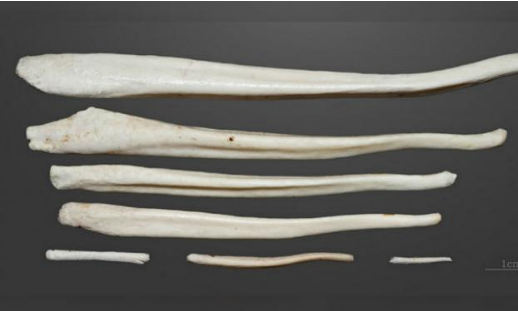 |
| See Her Reaction P |
Grownnews: London - Believest
when we hear the penis has a bone? In fact some living things males do have a
penis bone, known also as the os penis or baculum. The
bone was not unusual, as it is located at the end of the male sex organ, but is
not connected to the other frame structures. Tomcat and male dogs have it.
Likewise,
a number of other male mammals, namely chimpanzees, gorillas, weasel, and
bears. Walrus has a penis bone exceptional size, can reach a length of 55
centimeters. Quoted
by the Washington Post on Thursday (12/15/2016), the bones are even larger in
size again in the past. Fossils of an ancient species of walrus penis bone has
1.4 meters. In 2007, the fossil was sold auction up to US $ 8 thousand.
Surprisingly,
people do not have a penis bone. There are allegations that some verses of
Genesis actually trying to explain bone loss in humans as part of the creation.
Two Bible scholars argue that taken from Adam to create Eva is a penis bone,
not the ribs.
Human
bone loss Penis
A
study published Wednesday in the Proceedings of the Royal Society B tries to
explain the reasons that people lose bone. According
to the standard reproduction primates, humans do not need long to have sex so
it does not need a penis bone. Moreover, compared with other primate relatives,
the process in humans can be spelled without pressure.
Two
researchers from the University College London examines some sexual
characteristics primate and carnivore mammals, including features such as
polygamy, heavy testes, seasonal mating, and the length of the penis is inside
the female's body. In
primates, the best estimate whether the male has a penis bone is if the
presence of a penis inside the female (intromission) lasts for at least 3
minutes.
There
is also a relationship between the length of the long bones intromission of the
penis, both in primates and in carnivores.
 |
| Penis Bone Brown Bear, Source: Wikimedia |
In
Conversation, Matilda Brindle, an author of the study, said that "man is
not to fall into the category of" prolonged intromission ". The
average duration of from penetration to ejaculation in humans men just less
than two minutes." But,
intromission primates lingered not something romantic. The goal is breeding,
not for show. The length of time the penis in the vagina female to male mammals
guarantee for that females are mating "with the other before the male
sperm fertilize the opportunity."
In
2012, Lauren Reid, an anthropologist at Durham University, said that the penis
bone there for several reasons. Bones that provides speed, because the erection
is not necessary to wait until the blood flows meet penis. The
bone was also "helps males to maintain an erection long enough for
sufficient time to penetrate into the female reproductive tract and deliver
sperm."
But
there is another view. National Geographic reported that, in 2013, Australian
researchers suggests that baculum in mice could "stimulate the female
reproductive tract" thereby increasing the chances of egg fertilization.
Coming
and Going, Silih Changes
Penis
bone is present and disappears in the evolutionary history of mammals. Matthew
Dean, a biologist at the University of Southern California, told the Washington
Post last June, "When asked to a mammal expert, they look to the sky,
thought for a moment, and replied that it happened a few times."
The
authors of the latest study in this review to track the emergence of a penis bone
the first time between 145 and 95 million years ago. Explanation
using intromission for more than 3 minutes is not very applicable to large
monkeys such as chimpanzees are having sex just a few seconds. Chimpanzee penis
bones are also not great, could be as small as 6 millimeters.
Therefore,
the competition is thought to be the push factor, according to the researchers
at University College London. Chimpanzees mating in high-pressure conditions
because chimps are polygamous and tight competition among males once. According
to scientists, as being monogamous is capable of mating any time of year, early
humans no longer need these bones.
Kit
Opie, an anthropologist at University College London and author of the study,
said through a press release, "After ancestral humans apart from chimps
and bonobos, and mating systems we lead into monogamy at about 2 million years
ago, so the evolutionary pressure to continue to have baculum allegedly
shrinking. "
"This
may be the ultimate against baculum that was already shrinking, so then
disappeared entirely on early humans."















0 komentar:
Post a Comment